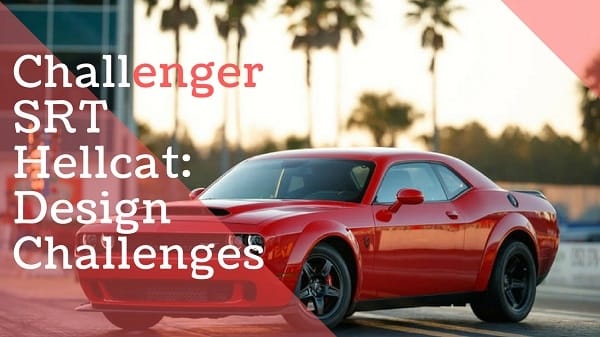For the 2012 model year, the most powerful Dodge Challenger was the SRT model. At 470 HP, it was impressive but it was being overshadowed by the Ford Shelby. This spurred Chris Cowland, director of SRT power train engineering at Dodge and SRT vehicle line executive Joe Grace, to propose a new 600-horsepower engine for the Challenger.
Naming the Project
Following the approval of upper management, Cow land and the SRT team began designing but a name was needed. Bob Lee, Chrysler vice president of power train, has a rule that all engine programs within his group use aviation names. Previous project names included Tiger shark (a U.S. fighter aircraft) and Apache (an attack helicopter). Our subject matter consultant at Texan Chrysler, Dodge, Jeep, Ram of Humble, TX explained that to determine the name of the new muscle car, a simple vote was conducted! The two finalists were Hellcat and Alley Cat. In the end, Hellcat, a WWII carrier-based fighter aircraft, was chosen.
Upping the Ante
Cowland and the Hellcat team were given roughly a year and a half to test and build a prototype that lived up to the lofty performance expectations that he proposed. But early in the process, the team proposed to quietly modify the engine’s specifications. Instead 600HP, they proposed 700HP. This figure was kept quiet with roughly 40-50 people in the company knowing the new specification.
Challenger Challenges
“There were lots of challenges,” said Russ Ruedisueli, head of SRT engineering. “This is our first supercharged car in the corporation.” One of the biggest challenges, according to Ruedisueli, was cooling down the engine.
With the help of the design team, the 2015 Challenger’s 1971-inspired front facia was transformed to ensure every part of the vehicle’s front end was optimized for airflow and cooling. That meant adding the unusual “Air Catcher lamp,” which feeds ram-air directly into the engine air box through the driver-side parking lamp, and an aluminum hood with a dedicated “cold-air” intake.
Other challenges included mating an eight-speed automatic transmission to a 700HP engine and calibrating its gear ratios. This even required Chrysler to upgrade its dynamometers, which automakers use to measuring horsepower and torque, just to test the developing Hellcat.
Bipolar Cat
The Hellcat is capable of world class race performance but most of its operating time will be used for standard driving. In order to meet the expectations of all drivers, and to meet federal fuel and emissions regulations, engineers designed multiple driver-selectable modes: Custom, default, sport and track. The different modes can be customized by customers to control steering, traction control and numerous other parts and technologies.
“You have to have those modes to have the flexibility to have this car,” Kuniskis said. “We wanted to build the car you can drive every single day.”
On top of the driving modes, Dodge also included on-screen performance pages that record and give real time feedback on 0-60 mph time, 60-0 mph braking, G-forces, one-eighth mile and quarter-mile times. A launch control system also helps maximize the vehicle’s straight-line acceleration.
Product Release
The 2015 Dodge Hellcat Challenger was unveiled at the 2014 New York International Auto Show by Dodge CEO and President Tim Kuniskis. The Hellcat’s price tag was roughly comparable to Challenger’s traditional high-performance competitors and the rest is history.

